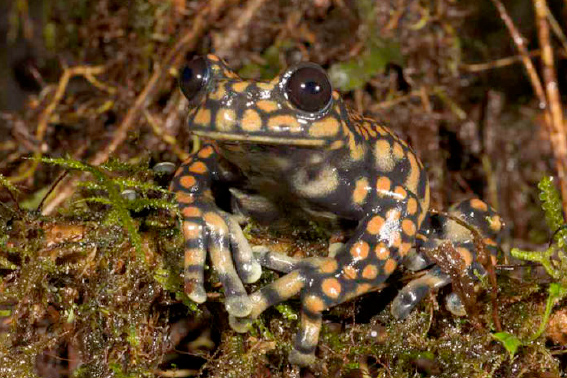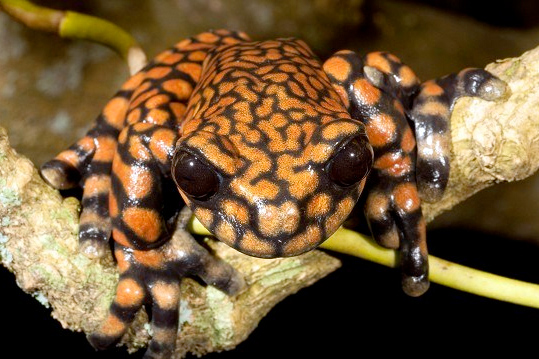 Hyloscirtus princecharlesi. Photo by Luis A. Coloma. |
Researchers have discovered a previously unknown species of frog and named it in honor of Price Charles, according to a paper published in the journal Zootaxa.
The species, dubbed Hyloscirtus princecharlesi, was one of two ‘new’ species described from highly endangered clouds forests in Ecuador. The second species is called Hyloscirtus cryptico.
Both species live in montane forest streams, a habitat that has particularly affected by the chytrid epidemic that has killed untold numbers of amphibians globally and driven dozens of species to extinction since the early 1980s.
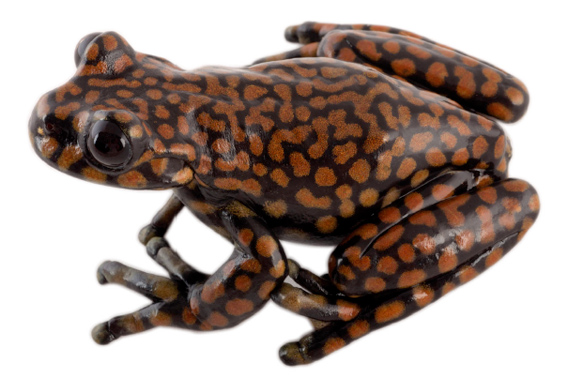 Hyloscirtus princecharlesi. Photo by Luis A. Coloma. |
Hyloscirtus princecharlesi was first identified by Luis A Coloma, an Ecuadorian scientist, among preserved museum specimens. In 2009 he collected specimen in the wild at Reserva Las Gralarias, a private nature reserve.
Hyloscirtus princecharlesi was named in honor of the Prince of Wales for the royal’s work to preserve tropical forests, including his efforts to mobilize political and financial support for a program to compensate developing countries for conserving their rainforests. Charles met Coloma earlier today at a workshop in Britain.
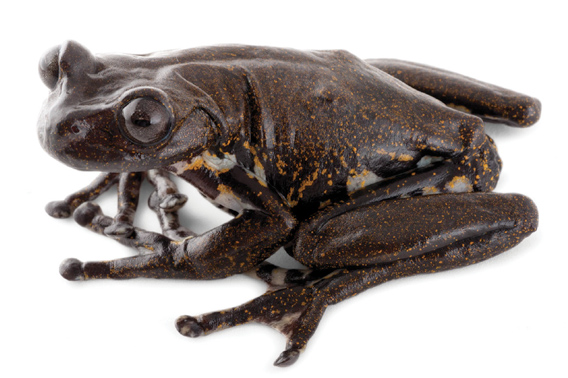 Hyloscirtus cryptico. Photo by Luis A. Coloma. |
The decision to name the colorful species after Prince Charles was made by Amphibian Ark, an initiative to rescue the world’s most endangered frogs, toads, salamanders, newts and caecilians. In 2011 Amphibian Ark was awarded mongabay.com’s conservation prize for its work.
Amphibians are at great risk globally due to habitat loss, introduced diseases like the chytrid fungus, over-harvesting, the effects of climate change, pollution, and invasive species. More than two out of every five amphibians assessed by the IUCN are considered threatened.
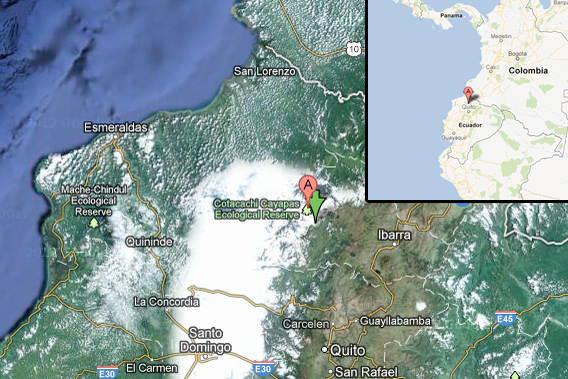 Map courtesy of Google Earth
|
CITATION: LUIS A. COLOMA at al. Molecular phylogenetics of stream treefrogs of the Hyloscirtus larinopygion group (Anura: Hylidae), and description of two new species from Ecuador. Zootaxa 3364: 1–78 (2012) www.mapress.com/zootaxa/
Related articles
